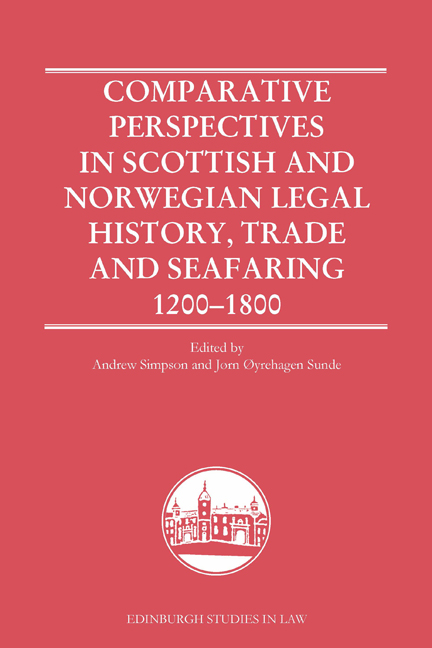5 - Urban Legal Procedure in Fourteenth Century Norway
Published online by Cambridge University Press: 17 November 2023
Summary
A: INTRODUCTION
An unprecedented endeavour of legal reform in the 1260s and 1270s resulted in the promulgation of a code of law for Norway in 1274: the Code of the Norwegian Realm, by King Magnus “the Lawmender” Hákonarson (1263–1280). Often regarded as an afterthought was the equally unique codification of urban law that was promulgated two years later, in 1276. This codex appears to have been initially constructed for Norway's largest town and most important export hub, Bergen. However, through processes that are obscure to us, versions of the urban codex were adapted for three other important towns within a few decades: the metropolitan Niðaros and the royal seats of Oslo and Tunsberg. Although the patterns of organisation in these towns do not contradict regulations of the new urban laws, the question remains whether they also implemented the codex into their legal procedures. This article analyses the urban legal procedure in the three towns in cases where the town citizens were involved to better understand how law worked after the promulgation of the Code of the Towns of 1276 (the urban code).
The structure of the article is formed of three sections. First, the concept of Norwegian urban law will be explained. Secondly, urban law will be located in terms of the question of “law in the books” versus “law in action”. The final part considers procedures in the towns of Niðaros, Oslo and Tunsberg from case studies that serve to illuminate this in terms of space of urban law, transaction, torts, urban women as litigants and finally trade related cases. The description of legal procedure that we can obtain from the surviving documents disclose that cases and their documentation were drawn up much in accordance with the Code of the Towns. More precisely, the procedure in practice rarely went against the procedure given by the urban code. Urban legal procedure was still performed in a rational way, a way that took into consideration the experiences of the towns in question, their institutional structures and the requirements of the urban legal subjects.
B: NORWEGIAN URBAN LAW
Urban settlements comprised a minor part of Norwegian society, compared to other regions of medieval Europe. At the beginning of the fourteenth century the kingdom is thought to have included fifteen, mostly small, towns within the mainland of the realm.
- Type
- Chapter
- Information
- Comparative Perspectives in Scottish and Norwegian Legal History, Trade and Seafaring, 1200-1800 , pp. 155 - 180Publisher: Edinburgh University PressPrint publication year: 2023

